The 2020 Democratic presidential primary is centered on some big ideas.
While some of the 20 candidates for the nomination have stayed away from specifics so far, a handful have shared some dramatic and detailed proposals on bread-and-butter topics such as health care and immigration.
Some of the candidates have been more aggressive in developing specific policies, while others say they are waiting to get into details until later in the primary.
Massachusetts Sen. Elizabeth Warren has been particularly ambitious on the policy front, putting forward proposals on student debt relief, universal child care, an “ultra-millionaire tax,” a tax on corporate profits, affordable housing and breaking up large tech companies.
Other candidates have focused more on a single, signature proposal, such as former Texas Rep. Beto O’Rourke, who announced an aggressive plan to fight climate change.
At the other end of the spectrum is South Bend, Ind. Mayor Pete Buttigieg, who has avoided detailed policy proposals, saying he doesn’t want to “drown people in minutiae” at this point in the campaign.
Here’s a quick guide to some of the biggest proposals so far.
Bernie Sanders’ Medicare for All plan
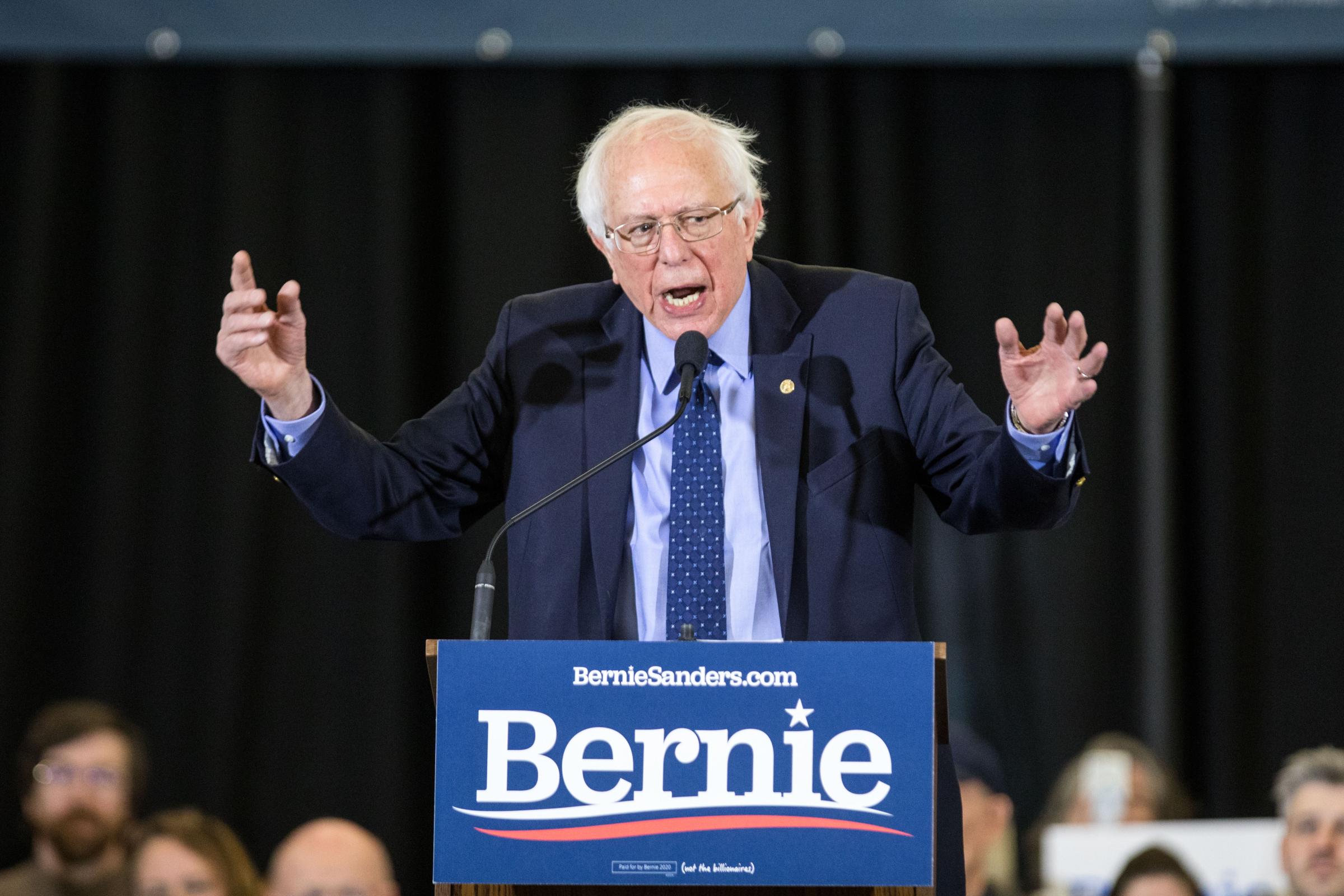
Who proposed it? Sen. Bernie Sanders of Vermont
What is the issue? Some 27 million Americans were uninsured in 2017. The major reasons are that the costs of private insurance are too high, people aren’t covered through their jobs and/or they are ineligible for government assistance.
What’s Sanders’ plan? He has proposed a single-payer health care system where a government-run plan provides insurance coverage to all Americans. Employers would be barred from offering private coverage, and recipients of Medicare and Medicaid would be transitioned onto the new plan. The plan would cover everything from maternity care to vision and dental benefits. There would be no co-pays.
How would he pay for it? He doesn’t say exactly. The plan includes a list of options such as payroll taxes, expanding the estate tax, increasing taxes on capital gains and dividends, taxing big banks and repealing deductions that benefit the wealthy.
What’s Trump’s position? Trump has long called for repealing the Affordable Care Act and his Administration has sought to undermine it in court. But efforts to replace it with Republican alternatives failed in Congress. He has pledged to offer a “truly great HealthCare” bill after the 2020 elections but not given specifics.
Read More: “The Medicare for All Act of 2019,” Sanders, Senate website. “Bernie Sanders unveils new Medicare-for-all legislation, a key component of his 2020 presidential bid,” Washington Post. “Sanders unveils revamped ‘Medicare for All’ plan,” Politico. “Bernie Sanders’s Medicare-for-all plan, explained,” Vox. “Medicare for All: What it is, what it isn’t,” PolitiFact. “What Do 2020 Candidates Really Mean When They Say ‘Medicare for All’?” Money.
Elizabeth Warren’s student debt plan

Who proposed it? Sen. Elizabeth Warren of Massachusetts
What’s the issue? The number of students taking out college loans has dramatically increased in recent years, leaving about four-in-10 adults under the age of 30 with debt. The median outstanding student loan was $17,000 in 2016, and all Americans combined now owe more than $1.5 trillion in student loans.
What’s Warren’s plan? Warren would allow people making less than $100,000 a year to get $50,000 in student debt forgiven, with a sliding scale for those making up to $250,000. She would also eliminate tuition and fees at every public two- and four-year college in partnership with states; and give historically black colleges $50 billion in aid. Her plan would cost $1.25 trillion over 10 years.
How would she pay for it? By levying what she calls the “ultra-millionaire tax,” which would affect only the richest 0.1% of Americans. Households with more than $50 million in wealth would pay a 2% tax on every dollar they own above $50 million, and a 3% tax on every dollar above $1 billion. She also argues that erasing student loan debt would boost the economy, offsetting the total cost of her plan.
What is Trump’s position? In a 2016 interview, a Trump campaign official said “unequivocally no” to debt-free college proposals. As president, Trump has proposed streamlining student loan repayment options, capping the amount of federally subsidized student loans that parents can borrow; ending student loan forgiveness for public service; and offering more grants for low-income students in career training programs.
Read More: “Universal free public college and cancellation of student loan debt,” Warren campaign on Medium; “Elizabeth Warren Wants To Erase Most Student Loan Debt,” NPR; “Elizabeth Warren’s Higher Education Plan: Cancel Student Debt and Eliminate Tuition,” New York Times; “Elizabeth Warren has the biggest free college plan yet,” Vox.
Bernie Sanders’ student debt plan
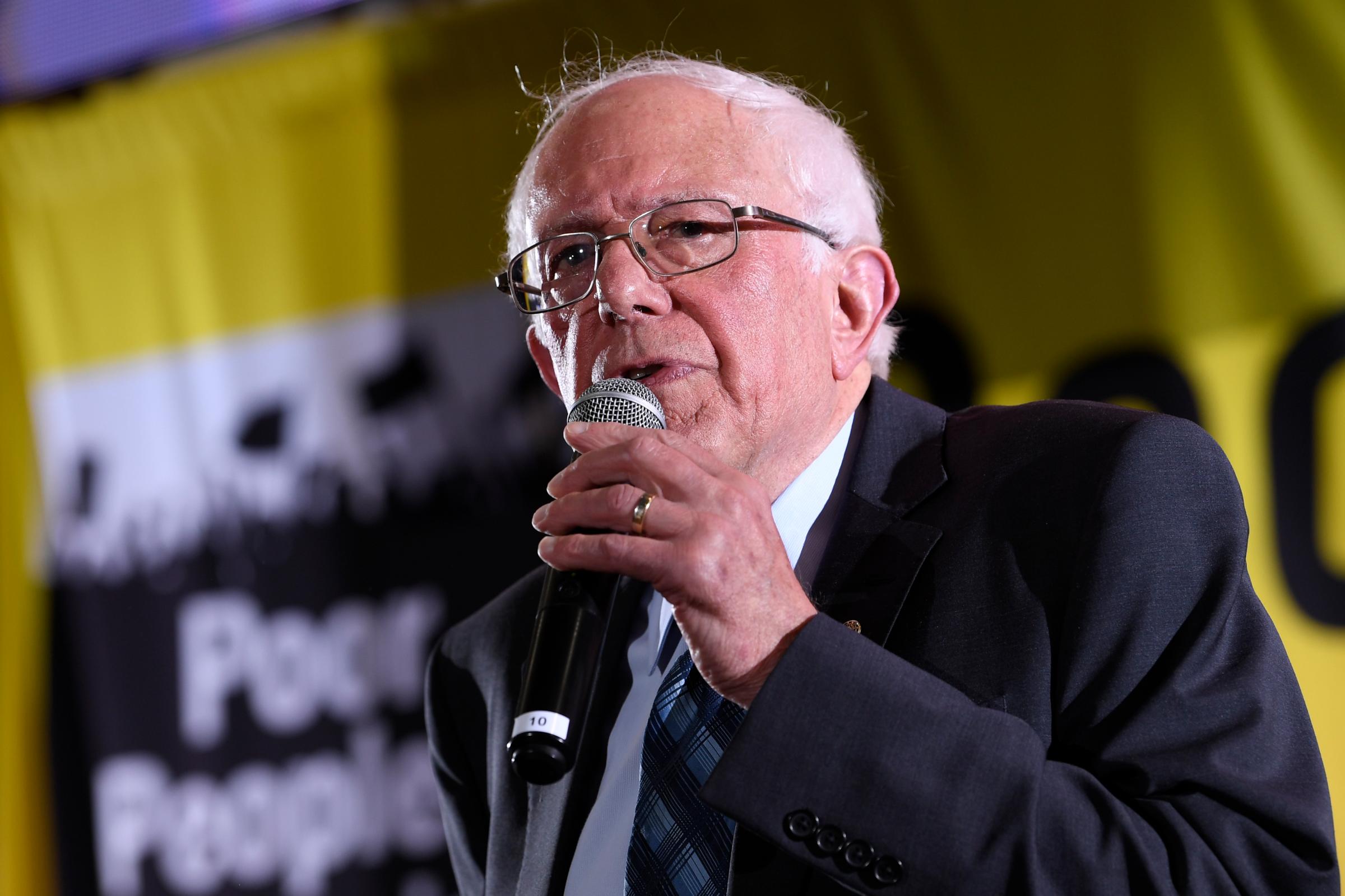
Who proposed it? Sen. Bernie Sanders of Vermont
What’s Sanders plan? Sanders would cancel all student loan debt in America — some $1.6 trillion owed by approximately 45 million people, regardless of income, including all private and graduate school debt as well.
How would he pay for it? By levying a tax on Wall Street speculation. The proposed taxes are a 0.5% tax on stock trades, 0.1% on bond trades and 0.005% on derivative trades.
Read More: “Bernie Sanders: America Is Drowning in Student Debt. Here’s My Plan to End It,” Fortune; “Bernie Sanders has a plan to forgive all student debt,” CNBC; “Bernie Sanders unveils education plan to eliminate student loan debt,” New York Times; “Sanders proposes canceling entire $1.6 trillion in U.S. student loan debt, escalating Democratic policy battle,” Washington Post; “Bernie Sanders unveils plan to cancel all $1.6 trillion of student loan debt,” CNN.
Beto O’Rourke’s climate change plan

Who proposed it? Former Rep. Beto O’Rourke of Texas
What’s the issue? Scientists say that the world’s countries have about a decade to dramatically reduce greenhouse gas emissions from things like coal power plants, gas-powered cars and agriculture in order to avoid the most severe consequences of climate change.
What’s O’Rourke’s plan? He has proposed rejoining the Paris climate deal; ending oil and gas leases on federal lands; creating some kind of tax, cap or “price signal to the market” on carbon; spending $5 trillion on clean energy research and extreme weather preparations over 10 years; and directing federal agencies to buy materials made in more environmentally friendly ways.
How would he pay for it? By cutting tax breaks for oil companies and increasing taxes on corporations and the rich.
What is Trump’s position? As a candidate, Trump repeatedly argued that climate change is a hoax. As president, he left the Paris agreement and repealed a number of Obama-era regulations aimed at climate change.
Read More: “Taking on Our Greatest Threat: Climate Change,” O’Rourke campaign website; “Beto O’Rourke Releases $5 Trillion Climate Change Proposal,” New York Times; “Beto O’Rourke guns for climate candidate mantle with $5 trillion proposal,” Axios; “Beto O’Rourke now has the most robust climate proposal of any 2020 presidential candidate,” Vox; “Beto O’Rourke’s offers a climate change plan, but some activists say it doesn’t go as far as the Green New Deal,” Washington Post; “Why Beto’s Climate Plan Is So Surprising,” The Atlantic.
Jay Inslee’s climate change plan

Who proposed it? Washington state Gov. Jay Inslee
What’s Inslee’s plan? He proposes that by 2030 all new light- and medium-duty cars and trucks sold in the U.S. would have to be fully electric, all U.S. electricity would have to come from carbon-neutral sources and all new buildings would have to emit no greenhouse gases. He would allow Americans to trade in old gas cars for a discount on an electric car. The plan would also provide incentives to cities, states and utilities to build electric charging stations.
How would he pay for it? By shifting government spending from fossil fuel subsidies. He also argues the plan will lead to “massive savings over the long term” to consumers on home heating, car fuel and climate-related storm damage.
Read More: “100% Clean Energy for America,” Inslee campaign website; “Jay Inslee, Running as a Climate Candidate, Wants Coal Gone in 10 Years,” New York Times; “Jay Inslee’s Climate Change Plan: 100% Clean Energy by 2030,” NBC News; “Jay Inslee’s Climate Plan Is Keeping It 100,” The Atlantic; “Jay Inslee promised serious climate policy and he is delivering,” Vox.
Joe Biden’s climate change plan
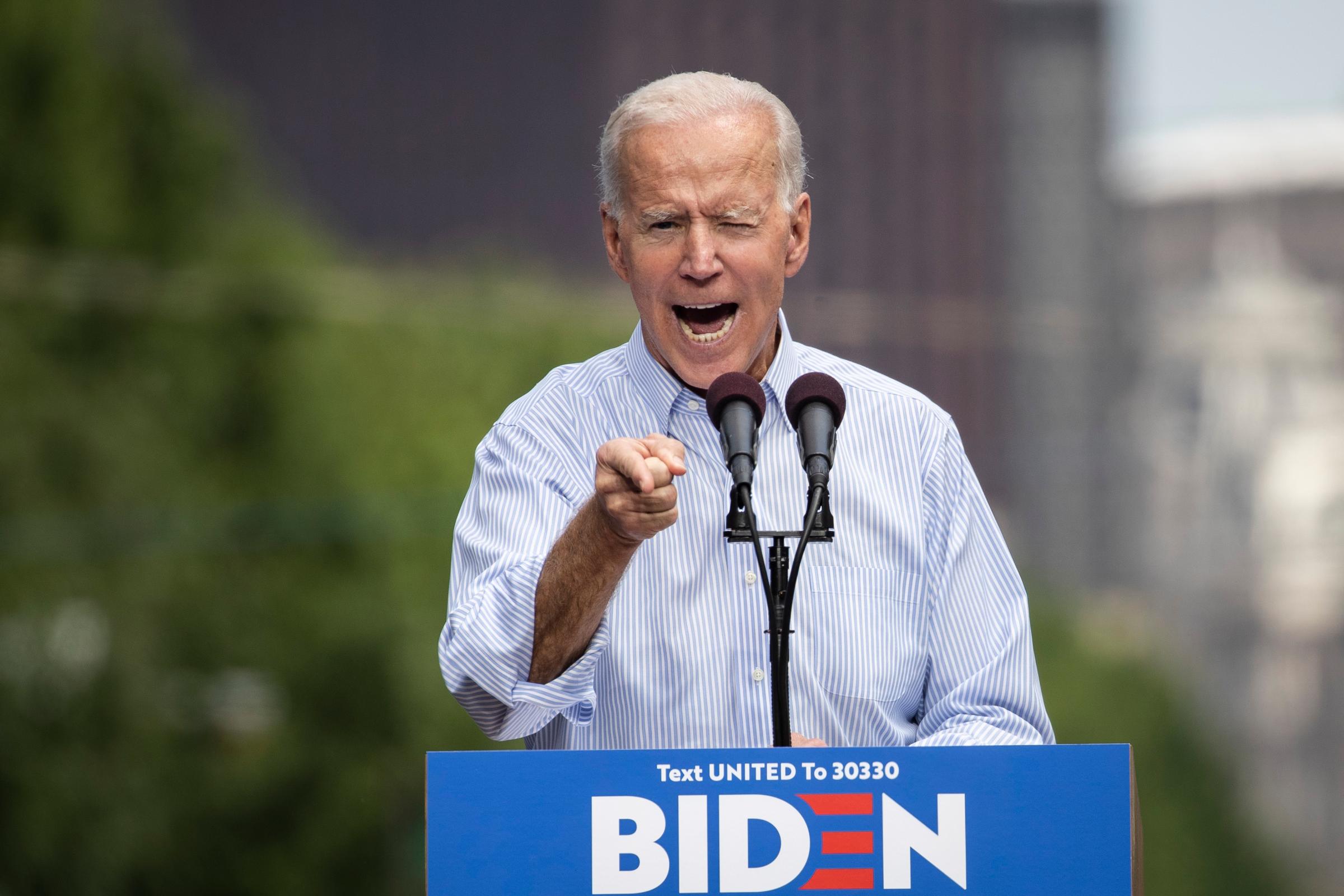
Who proposed it? Former Vice President Joe Biden
What’s Biden’s plan? He proposes spending $1.7 trillion over a decade to bring U.S. greenhouse gas emissions to net zero by 2050 by investing in clean energy research research, building new electric car charging stations, expanding high-speed rail, reducing emissions from the nation’s buildings by 50% by 2035 and creating an “enforcement mechanism” such as a fee or tax to reduce emissions. He would also recommit the U.S. to the Paris climate agreement.
How would he pay for it? By eliminating the Trump tax cuts and ending subsidies for the oil and gas industry.
Read More: “Joe Biden Issues Climate Plan That Aims Beyond Obama’s Goal,” New York Times; “Biden unveils $1.7T climate plan, vows to reject fossil fuel money,” Politico; “Joe Biden rolls out climate policy amid questions over his climate credibility,” CBS News; “Joe Biden’s $5 Trillion Climate Proposal: Net Zero Carbon Emissions by 2050,” TIME.
Cory Booker’s gun licensing plan
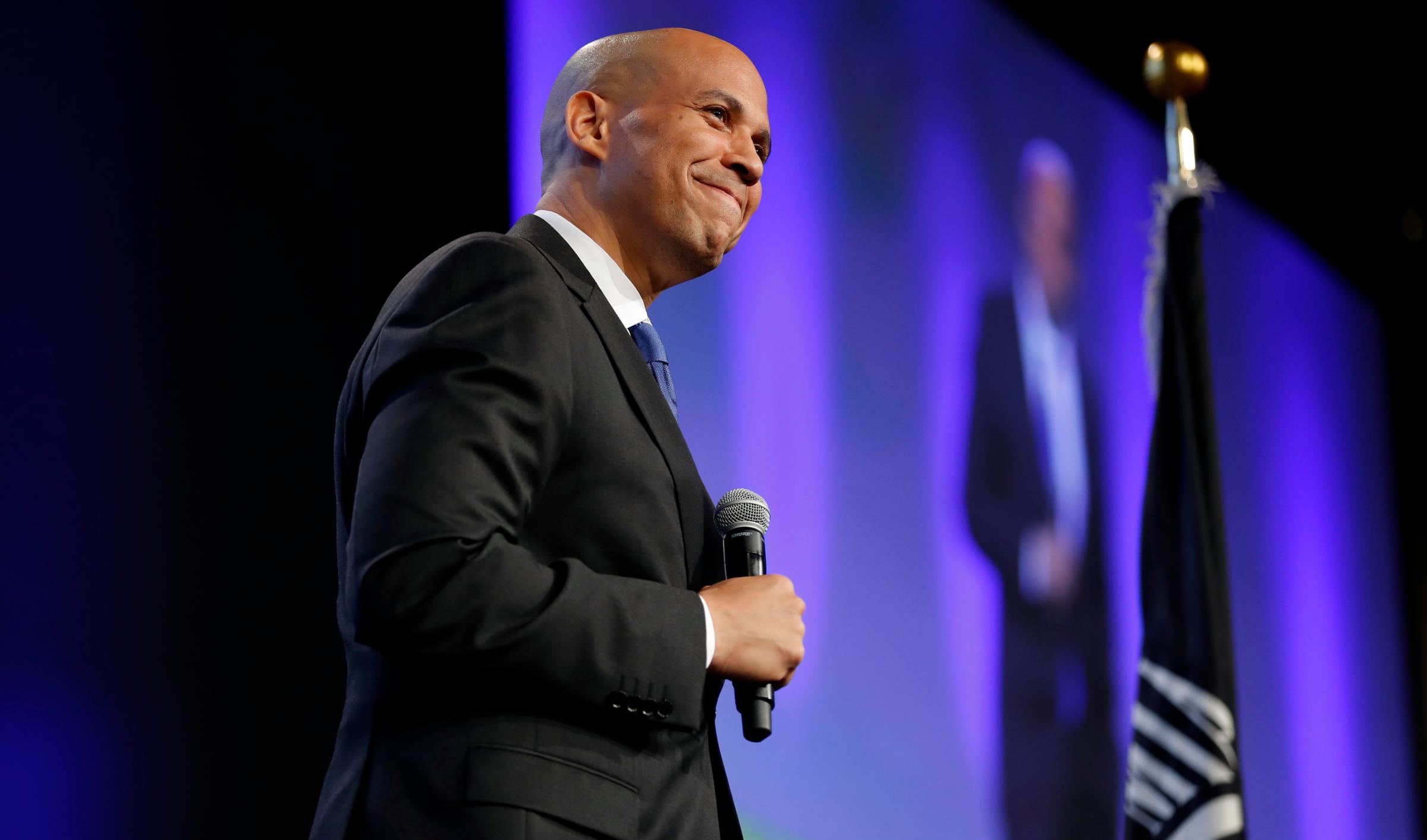
Who proposed it? Sen. Cory Booker of New Jersey
What’s the issue? More Americans died from firearm injuries last year than in any other year since at least 1968, according to statistics from the Centers for Disease Control and Prevention. Some of the deadliest mass shootings in history have happened in recent years, but public health experts say availability of guns may also be leading to an increase in suicides.
What is Booker’s plan? Booker proposes some standard gun safety ideas, including universal background checks, an assault weapons ban, better enforcement of existing gun restrictions, an end to gun manufacturer immunity from lawsuits, and more research on gun violence. But the centerpiece of his plan is a plan to require would-be gun owners obtain a license, “similar to applying for or renewing a passport.”
How would he pay for it? The plan calls for more money for gun violence research and the Bureau of Alcohol, Tobacco, Firearms and Explosives but does not include any funding sources.
What is Trump’s position? Over the years, Trump has voiced support for restrictions like background checks, minimum ages for gun sales and barring assault weapons, but he has mostly reversed those positions as president. In 2019, he argued that gun rights were “under assault” and vowed to protect them, telling an NRA convention that he would withdraw from an international treaty on gun sales.
Read More: “Cory’s Plan to End the Gun Violence Epidemic,” Booker campaign on Medium; “Cory Booker wants to start national gun licensing program, limit firearms purchases,” USA Today; “Cory Booker’s Gun Control Plan Calls for National Licensing Program,” New York Times; “Cory Booker unveils ‘sweeping’ but ‘simple’ gun violence prevention plan,” CNN; “Sen. Cory Booker Rolls Out Gun-Control Proposal,” Wall Street Journal; “Cory Booker now has the most ambitious gun control proposal of any 2020 candidate,” Vox.
Amy Klobuchar’s infrastructure plan

Who proposed it? Sen. Amy Klobuchar of Minnesota
What’s the issue? In 2017, the American Society of Civil Engineers’ Report Card for America’s Infrastructure gave the country a D-plus overall, noting serious problems with bridges, roads, airports, dams and transit, among other issues. Some 19 million Americans also lack access to broadband internet.
What is Klobuchar’s plan? Klobuchar would spend $650 billion on rural broadband, city water systems, energy-efficiency projects, school construction, airports, mass transit, highways and bridges, among other things. She proposes another $25 billion for an infrastructure bank which would provide seed money for local and state governments, spurring an additional $200 to $300 billion in funding.
How would she pay for it? By reversing some of Trump’s corporate tax rate cut, closing corporate tax loopholes and levying a financial risk fee on the largest banks.
What is Trump’s position? In 2018, Trump proposed using $200 billion in federal money to incentivize state and local governments to spend on infrastructure projects, but that plan stalled. He recently agreed with top Democrats to pursue a $2 trillion plan to upgrade highways, railroads, bridges and broadband, but it is facing opposition from his own chief of staff and Republicans in Congress.
Read More: “Amy’s Plan to Build America’s Infrastructure,” Klobuchar campaign on Medium;“Amy Klobuchar Proposes $1 Trillion Infrastructure Plan,” New York Times; “Klobuchar lays out ‘bold, trillion-dollar’ infrastructure plan,” CNN; “Klobuchar’s first 2020 policy proposal: A massive infrastructure plan,” Politico; “Sen. Amy Klobuchar Proposes National Infrastructure Plan,” Wall Street Journal; “Democratic presidential candidate Amy Klobuchar wants to pay for her $1 trillion infrastructure plan by reversing some Trump corporate tax cuts,” CNBC; “Amy Klobuchar’s $1 trillion infrastructure plan, explained,” Vox.
Kirsten Gillibrand’s paid family leave plan

Who proposed it? Sen. Kirsten Gillibrand of New York
What’s the issue? Although some employers provide it voluntarily, the U.S. is the only developed nation without a national paid maternity leave requirement. Studies show paid leave improves worker retention and lowers the number of new parents on public assistance.
What is Gillibrand’s plan? Her FAMILY Act, modeled after programs in states like California and New Jersey, would guarantee new parents and caregivers of family members who are ill and people with serious illnesses up to 12 weeks of paid leave. Workers on qualifying leave would receive 66% of their salaries.
How would she pay for it? With a 0.2 percent payroll tax, split between workers and their employers. Gillibrand says that would amount to just under $4 a week for the average worker.
What is Trump’s position? In his campaign and a State of the Union address, Trump called for paid parental leave. A Republican bill drafted in part with ideas from his daughter Ivanka would allow parents to borrow from their future Social Security benefits to pay for their own paid leave, but the bill has not yet moved forward in Congress.
Read More: “The Family And Medical Insurance Leave (FAMILY) Act,” National Partnership for Women & Families. “Kirsten Gillibrand is making paid family leave a defining issue in her 2020 run,” Vox. “Paid family leave, explained,” The Week. “Yes, Gillibrand and DeLauro introduced a family leave bill. More important, Republicans are introducing paid leave bills, too,” Washington Post. “Paid Family Leave Gets More Attention, but Workers Still Struggle,” New York Times. “Are Any of the Paid Family Leave Plans Actually Any Good?” New York.
Elizabeth Warren’s universal child care plan

Who proposed it? Sen. Elizabeth Warren of Massachusetts
What’s the issue? In 33 states, child care for young kids costs more than college tuition, according to nonpartisan think tank New America. The U.S. Department of Agriculture estimates the average cost of raising one child from birth to 18 exceeds $230,000.
What is Warren’s plan? She proposes spending $700 billion to create a network of government-funded childcare centers. Families earning less than 200% of the federal poverty level would be eligible to send their children to these facilities for free. Families with incomes above that would pay based on a sliding scale, up to a maximum of 7% of their income.
How would she pay for it? By levying what she calls the “ultra-millionaire tax.”
What is Trump’s position? With input from his daughter Ivanka, Trump proposed setting aside $1 billion for block grants to states to either encourage employers to invest in child care or expand existing child care programs. To receive the money, states would need to show they have reduce regulations that reduce the number of child care providers.
Read More: “My plan for Universal Child Care,” Warren campaign on Medium; “Elizabeth Warren Proposes Universal Child Care,” New York Times; “The Cost of Child Care Is Crushing American Families. What Will the Presidential Candidates Do About It?” Marie Claire; “‘It’s a constant hustle.’ 2020 brings renewed attention to US child care woes,” Christian Science Monitor; “Elizabeth Warren’s Childcare Policy Could Spark $700 Billion of Growth,” Bloomberg; “Elizabeth Warren: Does her wealth tax pay for her child care and higher education plans?” PolitiFact.
Amy Klobuchar’s criminal justice reform plan
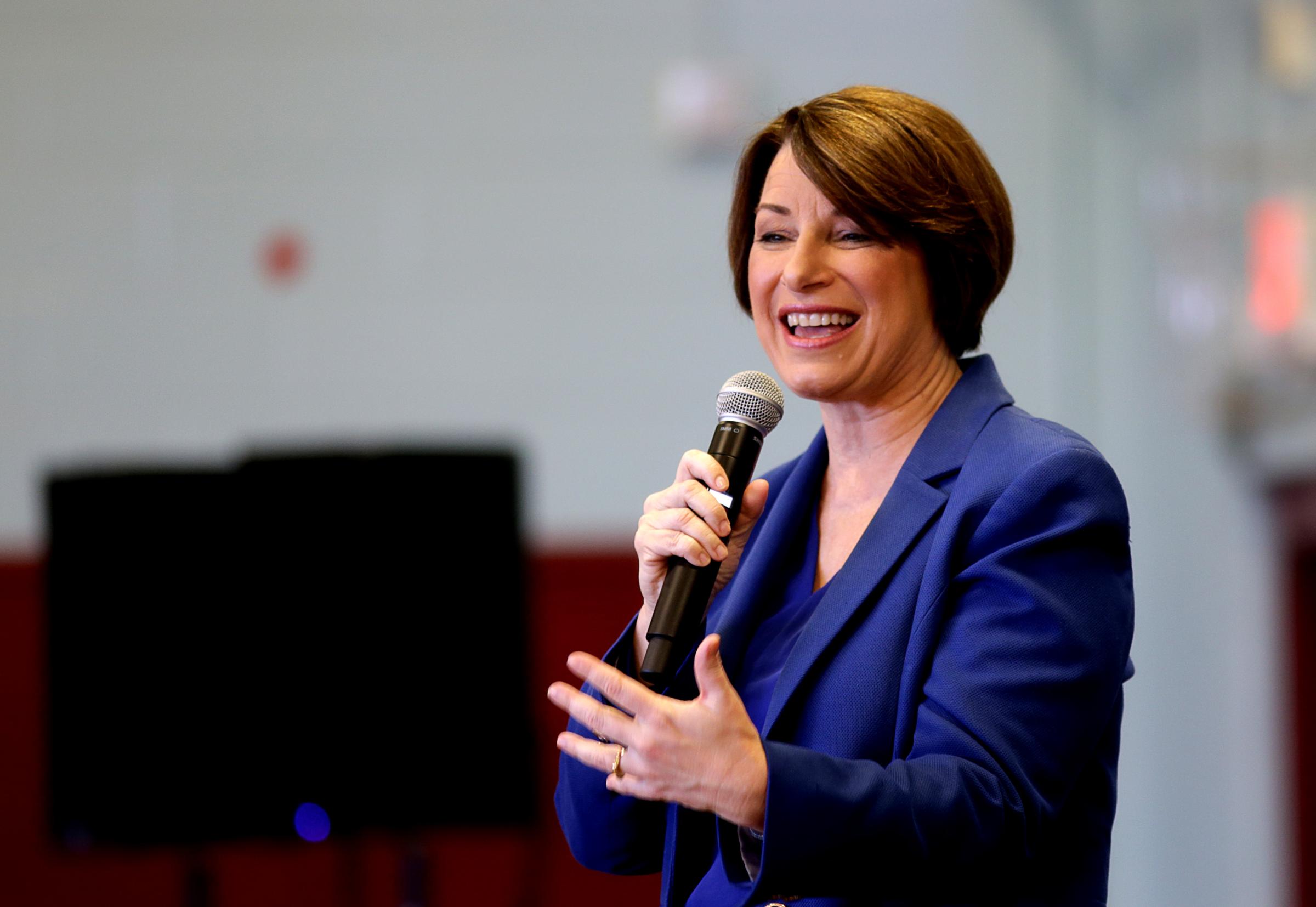
Who proposed it? Sen. Amy Klobuchar of Minnesota
What’s the issue? The U.S. has the highest rate of incarceration per 100,000 people in the world, with 2.2 million people in prisons and jails, according to the Sentencing Project. This has largely been driven by tough-on-crime laws and policy changes over the last four decades.
What’s Klobuchar’s plan? Klobuchar would streamline the process for federal inmates asking the president for a pardon or commutation, setting up a diverse, bipartisan advisory board to vet requests. The board would primarily review the cases of inmates serving long sentences for nonviolent drug crimes, especially those who have shown rehabilitation while in prison.
How would she pay for it? The plan’s costs are unclear, but there would likely be minimal administrative expenses.
What is Trump’s position? As president, Trump signed a bipartisan criminal justice reform bill that shortened sentences for some federal inmates and expanded job training and other programs aimed at reducing recidivism in federal prisons. He’s issued only a handful of commutations and pardons as president, mostly for high-profile people such as controversial Arizona sheriff Joe Arpaio.
Read More: “On criminal justice reform, it’s time for a second step,” Klobuchar op-ed, CNN; “Amy Klobuchar has a plan to reverse the war on drugs — and doesn’t need Congress to do it,” Vox.
Kamala Harris’ teacher pay plan
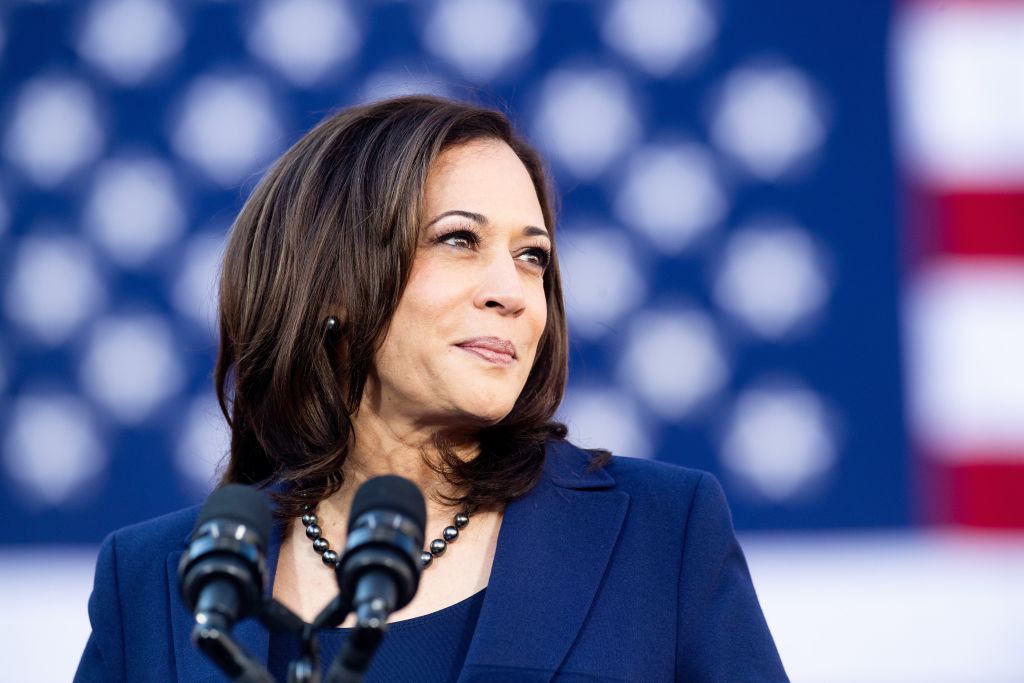
Who proposed it? Sen. Kamala Harris of California
What is the issue? Teachers earn 18.7% less than comparable college-educated professionals, according to an analysis by the Economic Policy Institute, a nonpartisan think tank. (Including benefits, like time off, the so-called teacher wage gap is closer to 11%.)
What’s Harris’ plan? She proposes giving the average teacher a $13,500 raise, equivalent to a 23% boost in pay. The federal government would provide some money upfront, then match every $1 that states contribute with $3 in federal money. Teachers in high-need schools that disproportionately serve students of color would get more of a raise. Her campaign estimates the plan would cost $315 billion over 10 years.
How would she pay for it? By expanding the estate tax and ending certain tax advantages enjoyed by the wealthy.
What is Trump’s position? As president, Trump has proposed cutting the Department of Education budget, including federal grants for teacher training, and shifting spending to more grants for charter schools.
Read More: “America’s Teachers Deserve a Raise,” Harris campaign website. “Our teacher pay gap is a national failure. Here’s how we can fix it,” Harris in Washington Post op-ed. “Kamala Harris wants to give American teachers a $13,500 average raise,” Chalkbeat. “Kamala Harris Wants to Boost Average Teacher’s Pay by $13,500,” TIME. “Democratic presidential candidate Kamala Harris wants to give every American teacher a big raise. Here’s how she plans to do it,” CNBC. “Kamala Harris’s plan to dramatically increase teacher salaries, explained,” Vox. “Inside Kamala Harris’ plan to raise teacher salaries,” CNN.
Cory Booker’s baby bonds
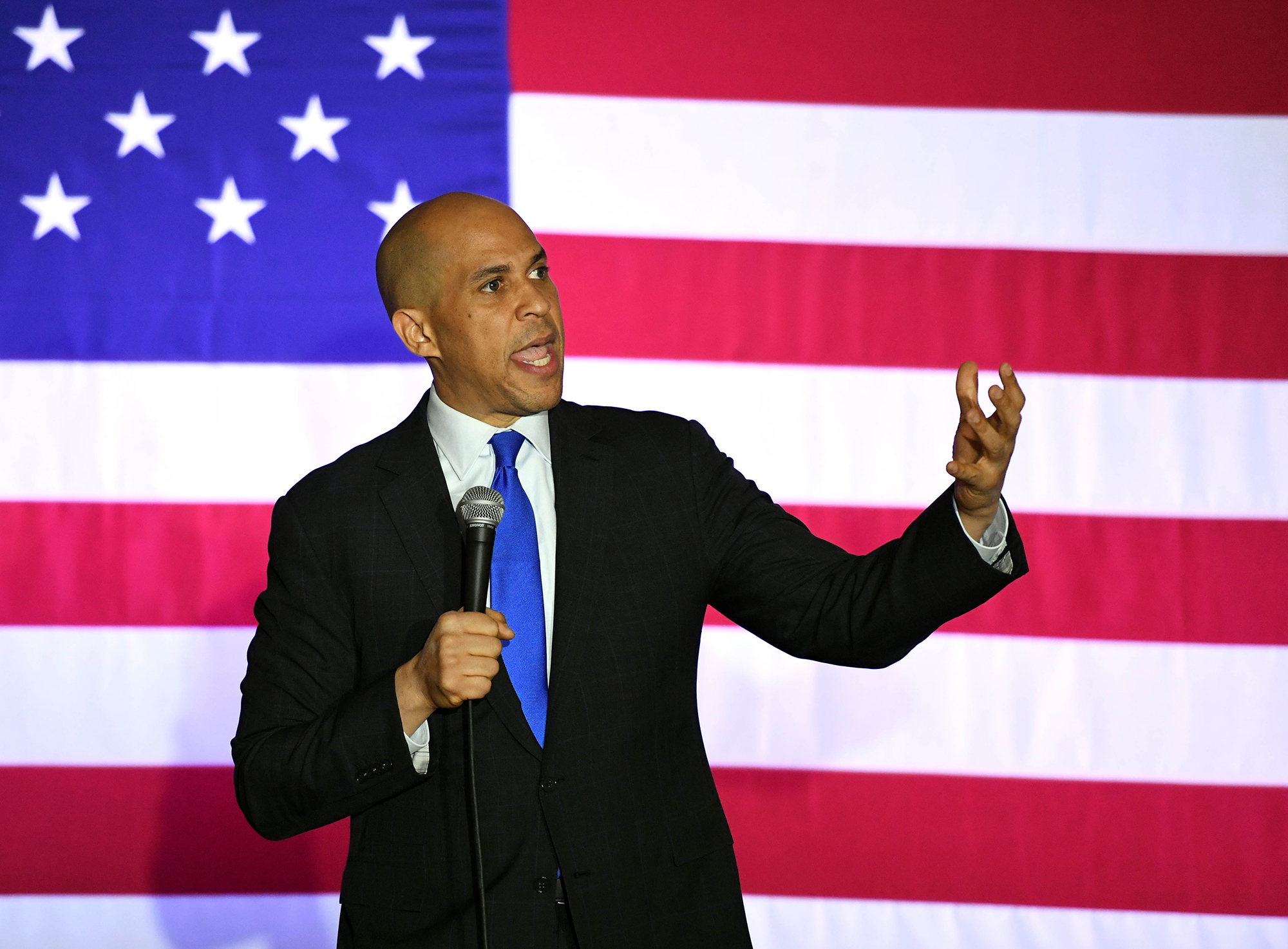
Who proposed it? Sen. Cory Booker of New Jersey
What is the issue? Experts say the U.S. has a growing racial wealth gap on everything from retirement savings to student loan debt. One study found the average white family has $919,000 in wealth, compared to $140,000 for black families and $192,000 for Hispanic families.
What’s Booker’s plan? He proposes giving all newborns savings accounts seeded with $1,000. Each year, children up to age 18 in low-income households would receive up to $2,000. The money would be kept in a low-risk savings account managed by the Treasury Department with a roughly 3% annual rate of return. Children could only withdraw the money after turning 18 for things like going to college or buying a home.
How would he pay for it? By lowering the threshold for the estate tax and taxes on capital gains from inherited stocks and property.
What is Trump’s position? Trump has argued that his economic policies have helped reduce the black unemployment rate. Fact checkers say his frequent claims that it’s the lowest in history are inaccurate, the rate was decreasing before he came into office and it remains higher than for other ethnic groups.
Read More: “An exclusive look at Cory Booker’s plan to fight wealth inequality: give poor kids money,” Vox. “Study: Cory Booker’s baby bonds nearly close the racial wealth gap for young adults,” Vox. “Cory Booker wants ‘baby bonds’ for every newborn. How would that work?” Philadelphia Inquirer. “Cory Booker wants to give ‘baby bonds’ to every newborn. Here’s how that would work,” CNBC. “Booker Campaigns on Baby Bonds Program to Combat Inequality,” New York Times. “How Cory Booker’s ‘Baby Bond’ Proposal Could Transform the Reparations Debate,” The New Yorker. “Cory Booker’s 2020 policy agenda: ‘Baby bonds,’ criminal justice reform, action on climate change,” Washington Post.
Kirsten Gillibrand’s abortion rights plan
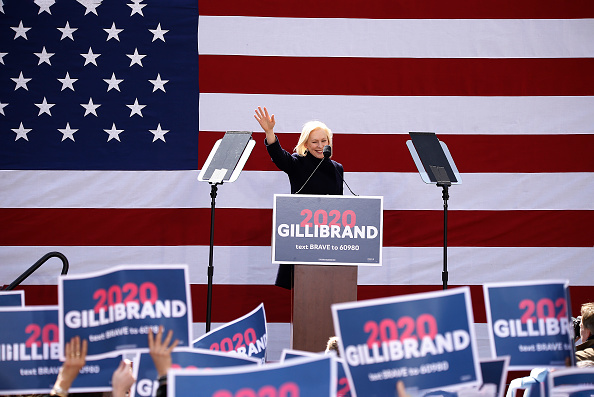
Who proposed it? Sen. Kirsten Gillibrand of New York
What’s the issue? Georgia, Ohio, Kentucky, Mississippi, Alabama and Missouri have recently passed laws that place heavy restrictions on abortion. Alabama’s law outlaws nearly all abortions, including in the case of rape and incest, and other “heartbeat bills” attempt to restrict it at the first instance of a fetal heartbeat, typically five to six weeks into a pregnancy — before most women know that they’re pregnant. Analysts believe the laws are designed to reach the Supreme Court with the intent of overturning Roe v. Wade.
What’s Gillibrand’s plan? She has pledged to eliminate the Hyde Amendment that bans federal funding for any abortion procedure, reverse a currently blocked “gag rule” that would bar federal funding to health care clinics that provide or promote abortions, increase funding for sex education and protect federal funding for Planned Parenthood. She’s also pledged to only nominate federal judges who promise to uphold Roe v. Wade as a precedent and said she would like to pass a federal law guaranteeing abortion rights.
How would she pay for it? Because most of the plan deal with existing policies, she doesn’t discuss funding.
What is Trump’s position? Previously an abortions rights supporter, Trump switched his position during the 2016 campaign and has worked to restrict abortion rights in office, although he has stated he believes exceptions should be made for rape, incest and the life of the mother. As president, he reinstated and expanded the Mexico City policy barring funding to foreign groups which perform or promote abortion and worked to instate a similar “gag rule” on domestic health care groups. He was the first sitting president to address the annual March for Life in Washington. Trump also argues that many of the federal judges he’s nominated will restrict abortion rights.
Read more: “Protecting reproductive rights requires a real, proactive agenda. Here’s mine,” Gillibrand campaign on Medium. “Kirsten Gillibrand plans to stay front and center in the abortion fight,” the Washington Post; ”In Abortion Fight, 2020 Female Candidates Lead Call To Arms,” the New York Times; “Kirsten Gillibrand Is Struggling. Will Abortion Rights Be Her Rallying Cry?” the New York Times; “Kirsten Gillibrand shares plan to protect reproductive rights,” Axios; “Gillibrand says she’d seek to codify abortion rights as president,” PBS NewsHour.
Pete Buttigieg’s Supreme Court expansion
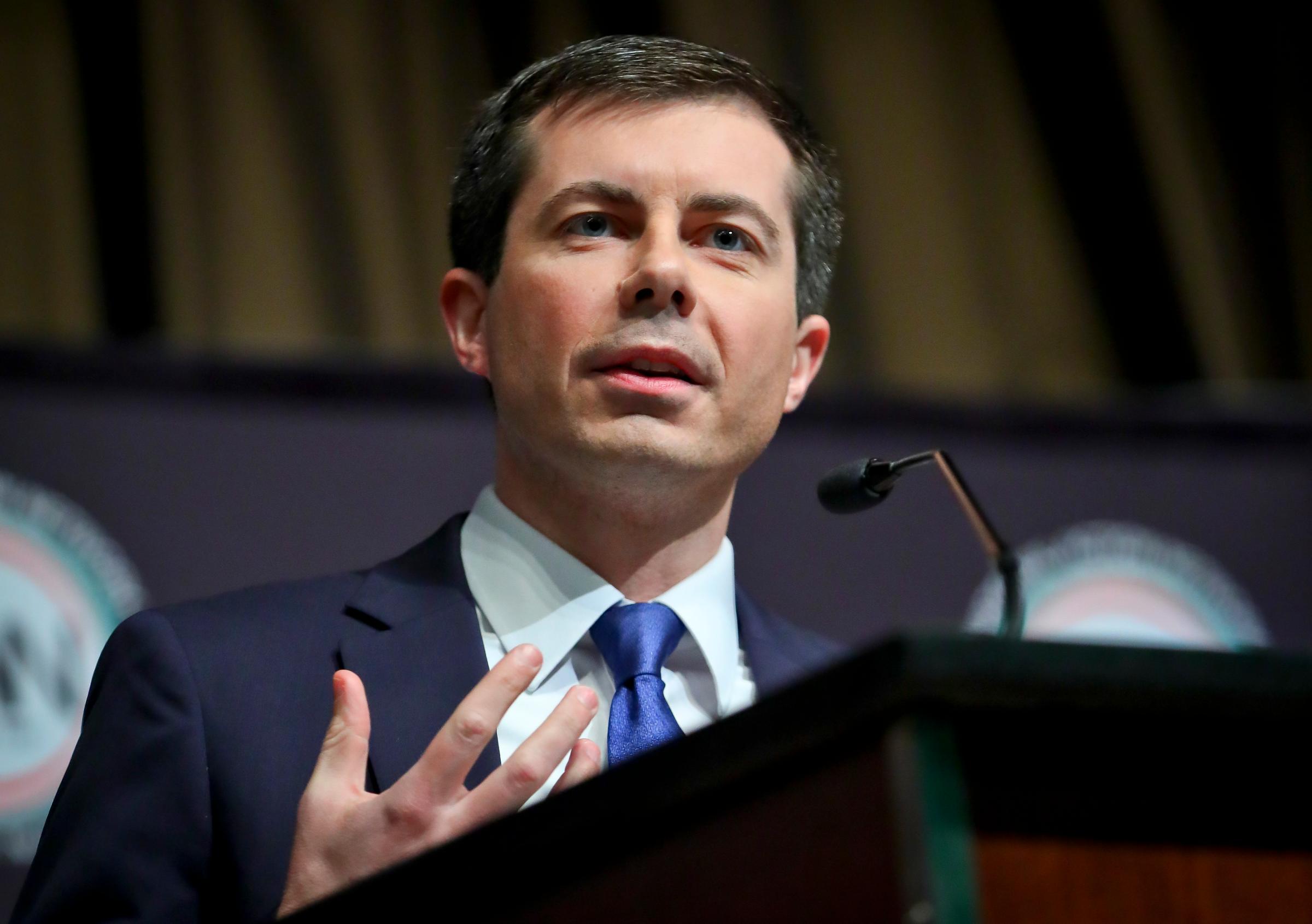
Who proposed it? South Bend, Ind., mayor Pete Buttigieg
What’s the issue? After Senate Majority Leader Mitch McConnell refused to hold hearings on President Obama’s nominee for the Supreme Court, Trump successfully filled the seat with Justice Neil Gorsuch. He later appointed Justice Brett Kavanaugh to another seat, giving the court a 5-4 conservative tilt. Polls show many Americans believe the nomination process has become too partisan.
What is Buttigieg’s plan? He proposes expanding the Supreme Court from nine justices to 15, with five affiliated with Democrats, five with Republicans and five nonpartisan justices chosen by a “strong supermajority” of the other 10. The partisan appointees would continue serving life terms, but the additional judges would serve one-year, nonrenewable terms and would be chosen two years in advance. If the 10 justices couldn’t agree on the other five, the court would not hear cases that term.
How would he pay for it? The costs involved are minor, but Buttigieg has not specified how he would pay for the additional salaries and staff.
What is Trump’s position? Trump has criticized Democrats such as Buttigieg who have called for expanding the Supreme Court, arguing that they are sore losers. “The only reason that they’re doing that: They want to try and catch up. So if they can’t catch up through the ballot box, by winning an election, they want to try doing it in a different way,” he said.
Read More: “Inside Pete Buttigieg’s plan to overhaul the Supreme Court,” NBC News; “Pete Buttigieg Proposes Radical ‘Court-Packing’ Plan to ‘Depoliticize’ the Supreme Court,” Law & Crime; “The Democrats Discover the Supreme Court,” The Atlantic.
Seth Moulton’s national service plan
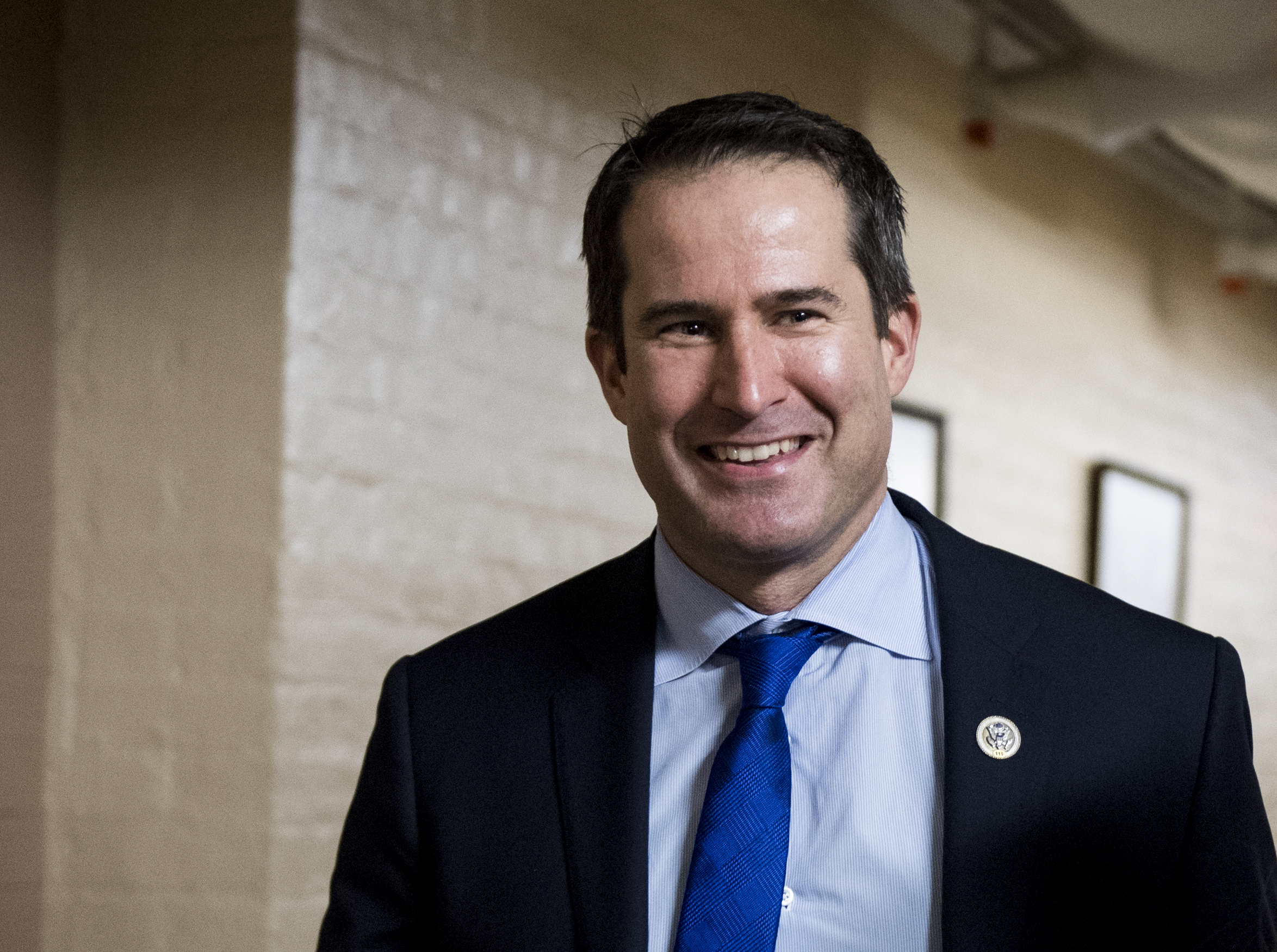
Who proposed it? Rep. Seth Moulton of Massachusetts
What’s the issue? Along with John Delaney and Pete Buttigieg, Moulton thinks that the 33.4 million Americans between age 17 and 24 should get more involved in serving their country.
What’s Moulton’s plan? He wants to write a civilian version of the G.I. Bill of 1944 that helped veterans pay for college, grad school or other vocational training. This version would reach out to all Americans aged 17 to 24, asking them to serve in an expanded version of AmeriCorps, FEMA Corps, AmeriCorps Vista or a newly established Federal Green Corps, in exchange for between 60% and 100% of in-state college tuition, or $14,000 to $24,000 for job training, depending on the number of years they served. The Federal Green Corps would work to “confront the effects of climate change,” including rising sea levels, floods, air and water pollution, as well as energy efficiency in public buildings. The program will also include a disaster relief wing that will address increased incidents of “climate-related disasters.”
How would he pay for it? Moulton hasn’t outlined any funding plans yet.
What is Trump’s position? While Trump called national service a “beautiful thing” on the 2016 campaign trail and pledged to look seriously at expanding it, he has sought on multiple occasions to remove the Corporation for National and Community Service from the federal budget, and with it AmeriCorps and the Senior Corps, as well as the Public Service Loan Forgiveness Program that relieves student debt for Americans who choose lower-paying service professions in government or non-profit institutions.
Read More: “National Service Education Guarantee,” Moulton campaign; “Seth Moulton is taking on college affordability and climate change in one plan. Here’s how,” Boston.com; “Moulton rolls out plan to promote national service among young Americans,” The Hill; “Rep. Seth Moulton pitches public service, green jobs in first Iowa visit of 2020 campaign,” Des Moines Register.
Julián Castro’s immigration plan
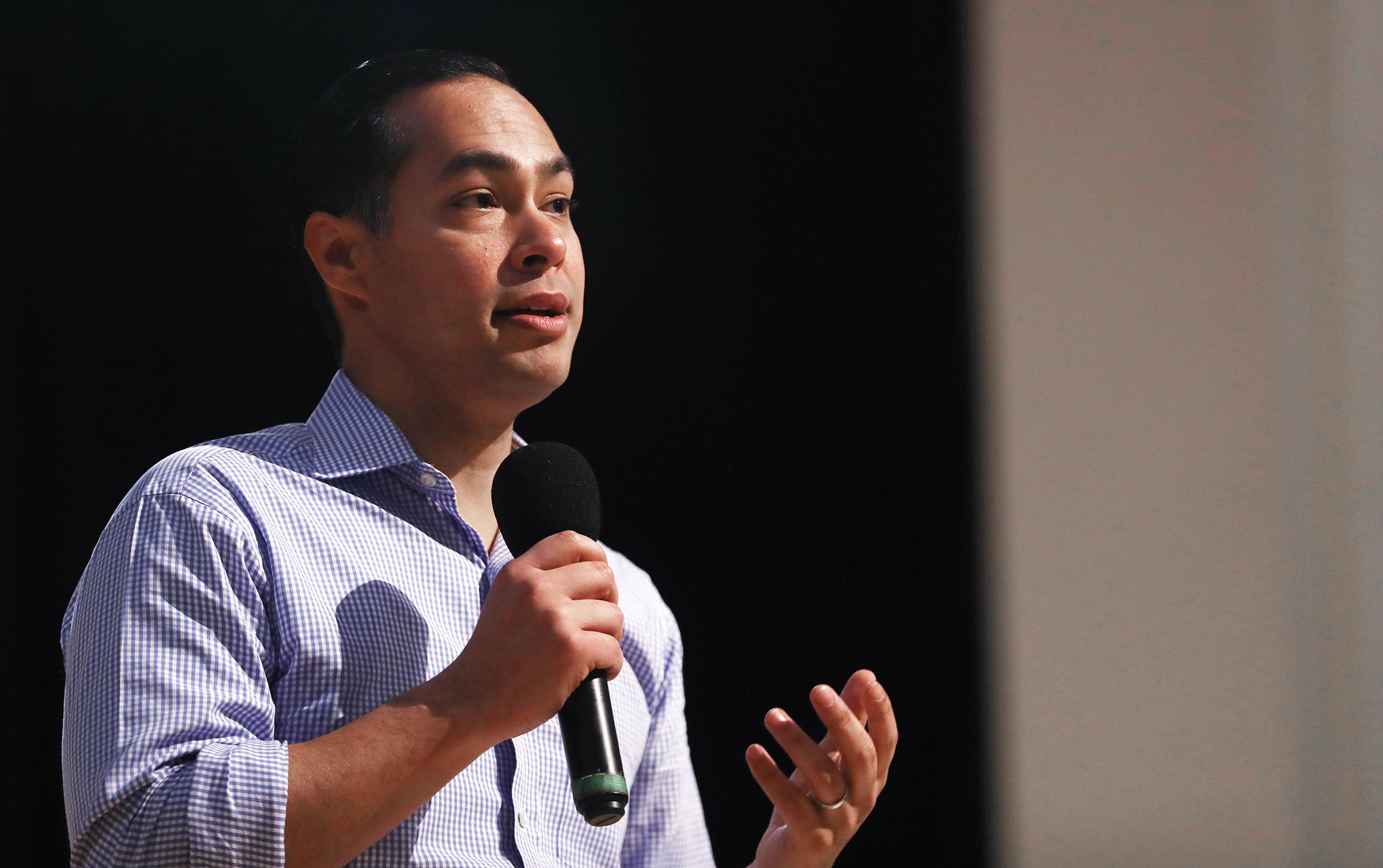
Who proposed it? Former San Antonio mayor and Secretary of Housing and Urban Development Julián Castro
What is the issue? There were 10.7 million unauthorized immigrants in the U.S. in 2016. While overall apprehensions of border crossers have dropped, a record number of families, many fleeing violence and economic problems in Central America, are now seeking asylum.
What’s Castro’s plan? He would reverse Trump’s travel ban, provide a path to citizenship for people in the country illegally, and make illegal border crossings civil, rather than criminal, offenses. He would also end agreements that allow local police to perform immigration duties, overhaul Immigration and Customs Enforcement, and create a “Marshall Plan” to aid Central American countries, among other things.
How would he pay for it? He does not address costs in the plan.
What is Trump’s position? As president, Trump enacted a travel ban on eight countries, nearly all of which are majority Muslim; reduced refugee admissions; attempted to cancel the Deferred Action for Childhood Arrivals program for people brought to the U.S. illegally as children; and ended Temporary Protected Status for Haiti, Nicaragua and Sudan, among other things.
Read More: “Putting people first,” Castro campaign on Medium. “Julian Castro unveils immigration plan that rolls back Trump, Bush-era laws,” CNN. “Castro unveils immigration platform, laying an early marker in the 2020 presidential contest,” Texas Tribune. “Julián Castro wants to radically restrict immigration enforcement,” Vox. “2020 Democratic candidate Julián Castro just released the most detailed immigration plan of any contender and it would reshape the US system,” Business Insider. “Democratic candidate Julián Castro rolls out first detailed 2020 immigration plank,” NBC News.
Andrew Yang’s universal basic income
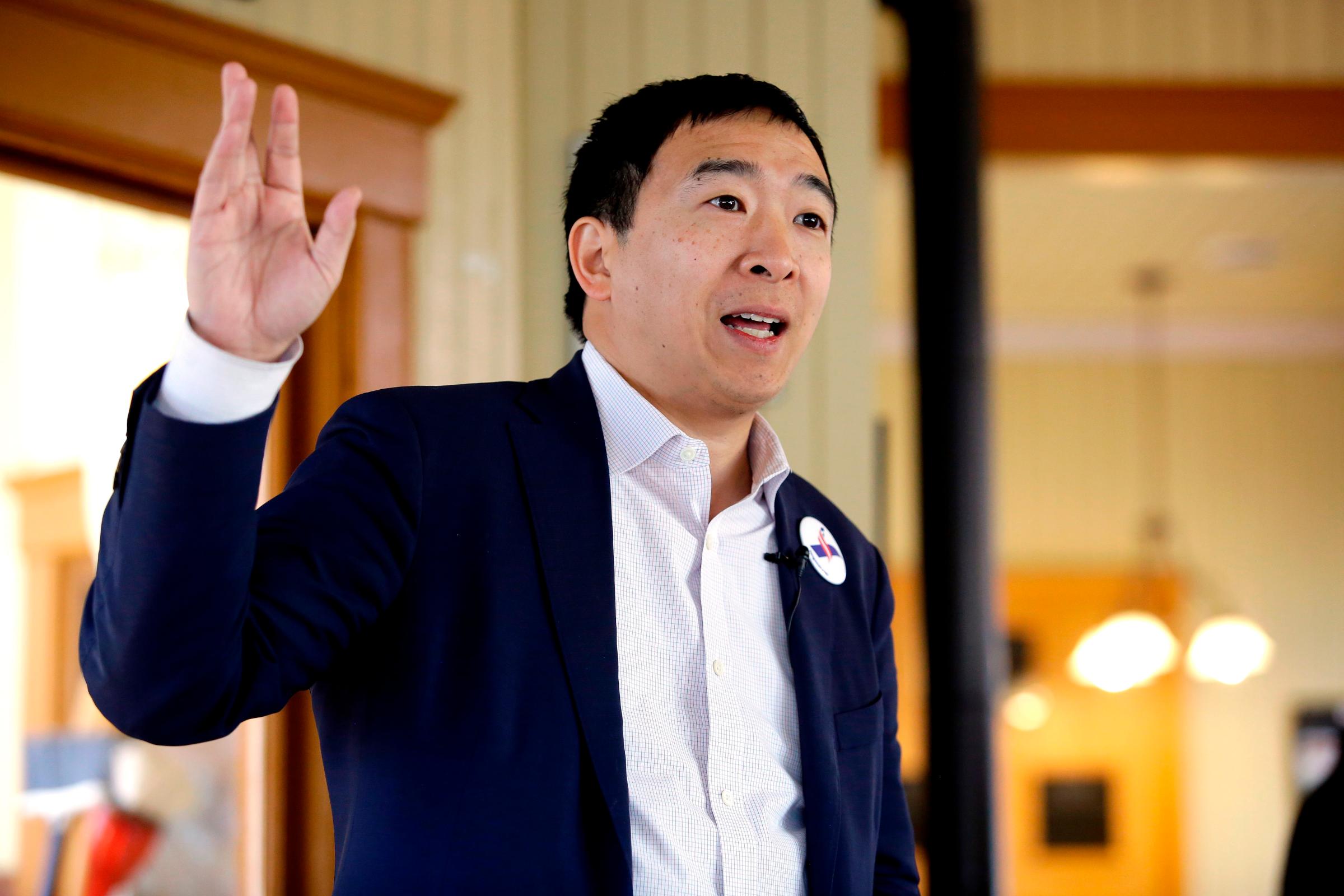
Who proposed it? Silicon Valley entrepreneur Andrew Yang
What is the issue? Estimates vary wildly, but experts agree that automation will cost more Americans their jobs, with one-fourth of U.S. jobs already considered at high risk. Meanwhile, America’s safety net is divided among multiple federal agencies and state governments.
What’s Yang’s plan? He proposes a “Freedom Dividend” that would allocate $1,000 a month to every American adult from ages 18 to 64, a form of universal basic income that has been floated periodically over the years by Americans such as Martin Luther King and Richard Nixon and has been tried in countries such as Finland. There would be no restrictions, conditions or work requirements.
How would he pay for it? With a value-added tax, a consumption tax levied on goods at each stage of their production and eventually passed onto the consumer.
What is Trump’s position? Trump has said he will bring back American manufacturing jobs by cutting regulations, lowering taxes and levying tariffs on foreign-made goods. As president, he has proposed budgets that would cut safety net programs like housing assistance, Medicare, Medicaid and Social Security, and giving states block grants instead of targeted entitlements.
Read More: “What Is Universal Basic Income?” and “The Freedom Dividend,” Yang campaign website. “This Presidential Candidate Wants to Give Every Adult $1,000 a Month,” TIME. “Andrew Yang, the 2020 long-shot candidate running on a universal basic income, explained,” Vox. “If Elected President, Andrew Yang Wants To Give Every American $1,000,” WGBH. “2020 hopeful Yang: $1,000 a month dividends would boost the economy,” Axios. “Why it’s legal, if unusual, for presidential candidate Andrew Yang to give out $1,000 a month to one lucky Iowan,” MarketWatch.
Will Kubzansky contributed to this report
More Must-Reads from TIME
- Where Trump 2.0 Will Differ From 1.0
- How Elon Musk Became a Kingmaker
- The Power—And Limits—of Peer Support
- The 100 Must-Read Books of 2024
- Column: If Optimism Feels Ridiculous Now, Try Hope
- The Future of Climate Action Is Trade Policy
- FX’s Say Nothing Is the Must-Watch Political Thriller of 2024
- Merle Bombardieri Is Helping People Make the Baby Decision
Contact us at [email protected]
